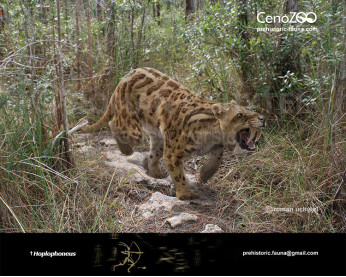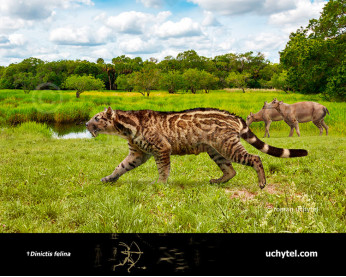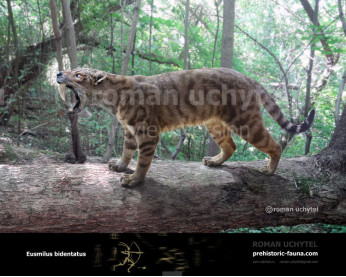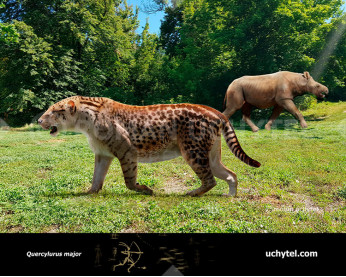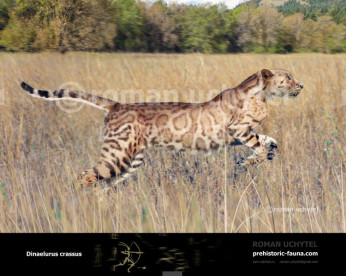Nimravus
2028920289Nimravus (†Nimravus (Cope, 1879))
Order: Carnivora
Family: Nimravidae
Size: 1,2 m in length, 55 cm in height, 20-40 kg of weight.
Time period: that lived in North America and Europe during the Oligocene epochs (33.3—26.3 mya).
Typical representative: †Nimravus brachyops
Nimravus is an extinct genus of the family Nimravidae known from North America and Europe during the Oligocene epoch, existing for approximately 7 million years. Nimravidae is an extinct family of carnivorans, sometimes known as false saber-toothed cats. Not closely related to true saber-toothed cats, they evolved a similar form through parallel evolution.
It probably hunted birds and small mammals, ambushing them like modern cats, rather than chasing them down. Nimravus competed with other false sabre-tooths such as Hoplophoneus.
A Nimravus skull, found in North America, had been pierced in the forehead region, the hole exactly matching the dimensions of the sabre-like canine of Eusmilus. This particular individual of Nimravus apparently survived this encounter, as the wound showed signs of healing. Another Nimravus fossil from Nebraska was described in 1959 by paleontologist Loren Toohey, and comprises a Nimravus skull with saber-teeth embedded into the humerus of another Nimravus, indicating a fatal incidence of intra-specific combat.
Nimravus (†Nimravus (Cope, 1879))
Order: Carnivora
Family: Nimravidae
Size: 1,2 m in length, 55 cm in height, 20-40 kg of weight.
Time period: that lived in North America and Europe during the Oligocene epochs (33.3—26.3 mya).
Typical representative: †Nimravus brachyops
Nimravus is an extinct genus of the family Nimravidae known from North America and Europe during the Oligocene epoch, existing for approximately 7 million years. Nimravidae is an extinct family of carnivorans, sometimes known as false saber-toothed cats. Not closely related to true saber-toothed cats, they evolved a similar form through parallel evolution.
It probably hunted birds and small mammals, ambushing them like modern cats, rather than chasing them down. Nimravus competed with other false sabre-tooths such as Hoplophoneus.
A Nimravus skull, found in North America, had been pierced in the forehead region, the hole exactly matching the dimensions of the sabre-like canine of Eusmilus. This particular individual of Nimravus apparently survived this encounter, as the wound showed signs of healing. Another Nimravus fossil from Nebraska was described in 1959 by paleontologist Loren Toohey, and comprises a Nimravus skull with saber-teeth embedded into the humerus of another Nimravus, indicating a fatal incidence of intra-specific combat.


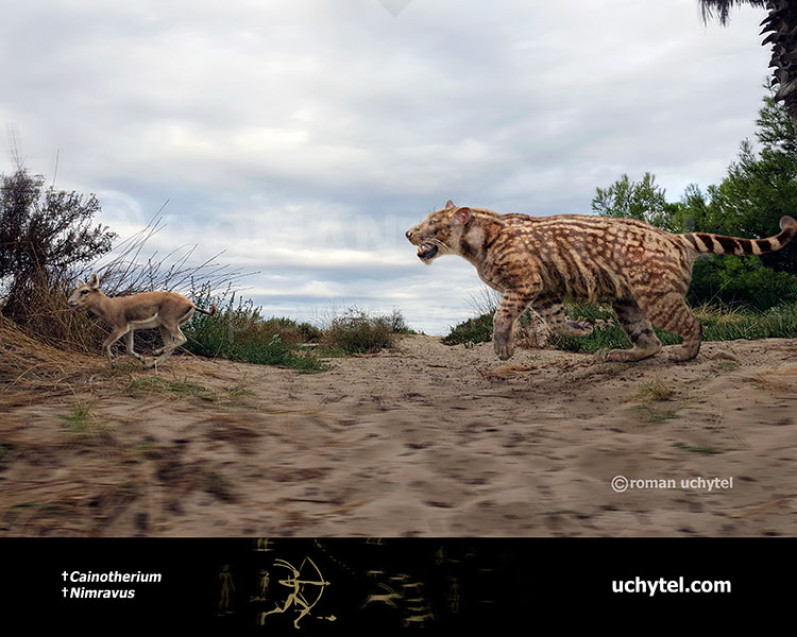
-797x638.jpg)


-70x56.jpg)
